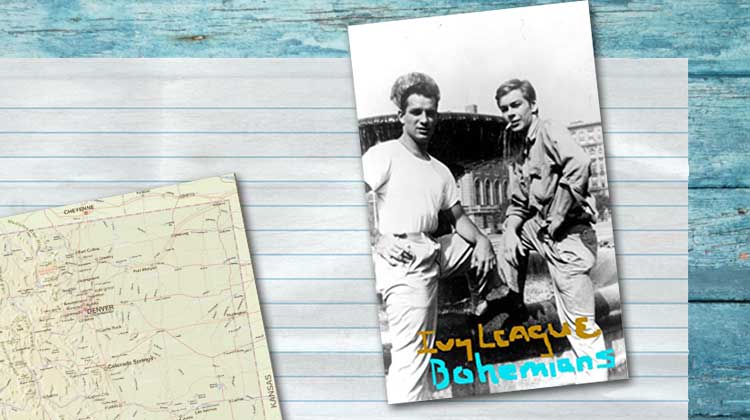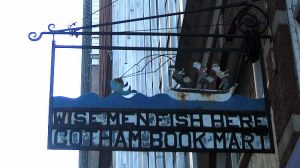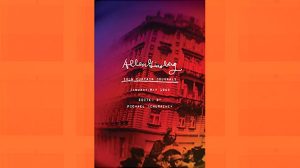
It is an irony of the Beat Generation and New York Schools that little is written about the Jack Kerouac School of Disembodied Poetics. Founded at Naropa University in 1974 by Allen Ginsberg and Anne Waldman, the school aspires to cultivate “contemplative and experimental approaches to writing,” and to this end, for the last forty years the school’s been the gathering grounds for the serious avant-garde. Yet the number of memoirs written about the place can be counted on two thumbs. That is, there is Sam Kashner’s When I Was Cool: My Life at the Kerouac School (2004), which is about his time as the school’s first student, and now his fiancé Alison Winfield Burns’ Ivy League Bohemians (2015).
Written as “a journal full of sudden revelations, repeating details, interesting language and [an] unedited format,” the book overlaps and serves as an addendum to Kashner’s (though by Burns’ admission she never read it). Beginning with her time at the Kerouac School, Bohemians also covers the decades afterward, from joining a Roman monastery to going to New York City where she reconnects with Kashner. In a post to Goodreads, she explained her motivations for writing the book:
I read some crap about Peter Orlovsky that was untrue. It made me realize people are forgotten once they die: the sound of a person’s intake of breath. A laugh. Voice timbre. A look across features. A cigarette smoked. A smile. Gestures. All that gets lost when personal landscapes die out. I wanted to remember my friends as the glory boys they are. The way we all were at the zenith of our powers. Camaraderie is very important to me. I love my poet friends. They were my best friends. Truest. Bluest. I ever had.
Interestingly, as the story progresses her thoughts on the Beats lose focus to her developing romance with Kashner. Still, a few stories stand out including a conversation with poet Larry Fagin and her reaction to the death of Orlovsky. Those looking for gossip won’t find any because in her effort to reanimate “the glory boys,” the ingloriousness has been cut out, leaving amusing albeit benign anecdotes like the following:
In my first day of a poetics course that Allen Ginsberg teaches, he walks around the front of the classroom, talking. The students are mostly college-aged boys.
“My sphincter is always willing, always eager, if any of you are interested, let me know,” says Allen.
The boys quickly look at each other.
Allen doesn’t appear to have any sphincter hopefuls, but Allen reads glorious poems to us. Peter Orlovsky is in the hall after class, showing Allen a poem on paper. Allen and Peter stand in a corner with their heads down examining the poem together. This is why I came to Naropa Institute’s Jack Kerouac School of Disembodied Poetics, to read and to write poems. It turns out that I am also making the best friends of my life. (25)
And here’s another:
One day Allen gives me his handwritten journal from a visit to Rome. He says that I can type it for him.
Weeks later, I run into Allen on the street as I romp all over town: Naropa is the first time in my life that I am truly happy. I spend my time writing my own poems, talking with the older poets, attending Naropa readings and dances, all in a whirlwind. Like Jane Eyre before me, I’ve found my spiritual equals.
Allen asks me if I’ve completed his Rome notebook. We’re standing on a street corner, waiting for a cross light. Just me and Allen Ginsberg and a bunch of buzzing cars. I say I haven’t even started yet, although I did note his handwriting is large, looping and nearly indecipherable.
Allen tells me that what I should now do is return the notebook and keep playing. (108)
In the end, Bohemians suffers from two weaknesses affecting its readability. The first is that while she prides the “unedited format,” the disjointed and repetitive story-telling makes this 383-page book 200-pages too long. As a self-published work on Amazon.com, it’s a text in need of an editor — and if it had one, Bohemians could’ve competed with those memoirs like Edie Parker’s You’ll Be Okay: My Life with Jack Kerouac (2007) or Helen Weaver’s The Awakener: A Memoir of Kerouac and the Fifties (2009). Otherwise, it aspires for more than it can provide.
The second weakness is Burns’ sincere, obsessive adoration for Kashner, which dominates the book and distracts from its intended purpose. With no hint of sarcasm, she writes that “Byron doesn’t hold a candle to Sam. For talent, beauty, chaotic tumult, and personality, Sam outstrips Shelley, Keats, Blake, Wordsworth, and Byron” (264). Such hyperbole could be excusable if every other chapter did not include verbatim the pair’s email correspondence. Reading them, what Burns identifies as love others may see as being shut out, stood up, and told empty promises. The writer’s euphoria is met with the reader’s uneasiness.
It is a shame that few memoirs are written about the Kerouac School, but of all the self-published books trying to capitalize on the reputation of the Beats, this may be one of the most-interesting (which is different from it being the best). In fact, as it is only available in Kindle edition, I recommend liberal use of the search bar. Read about her time in Rome. Read about Orlovsky’s memorial service. There are worse ways to spend $1.99.
Further Reading
Burns, Alison Winfield. 2015. Ivy League Bohemians (A Girl Among Boys): Bliss Book of Columbia University’s Pariah Artists. Amazon.com. http://www.amazon.com/League-Bohemians-Girl-Among-Boys-ebook/dp/B00TE2QS2E.
Burns, Alison Winfield. 2014. “Ask the Author: Alison Winfield Burns.” Goodreads. http://www.goodreads.com/author/8132286.Alison_Winfield_Burns/questions.
Burns, Alison Winfield. 2012. “Tribute from Alison Winfield Burns, USA.” On the Road for Kerouac: Reinvent the Scroll. http://www.ontheroad4kerouac.org/2012/09/tribute-from-alison-winfield-burns-usa.html.
Naropa University. n.d. “Jack Kerouac School of Disembodied Poetics.” Naropa University. http://www.naropa.edu/academics/jks/.
Tough, Paul. February 15, 2004. “This You Call a College?” The New York Times. http://www.nytimes.com/2004/02/15/books/this-you-call-a-college.html.





Leave a Reply